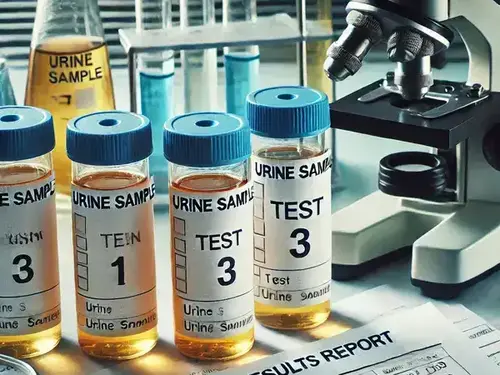Understanding the Basics
Pain during urination, known as dysuria, can turn a routine biological process into an agonizing experience. It’s not just a symptom; it’s your body’s way of waving a red flag. The potential causes are varied and range from the benign to the seriously concerning. We’ll dive into the most common culprits, how to differentiate between them, and why ignoring this symptom can be a very bad idea.
Possible Causes: A Walkthrough of the Usual Suspects
1. Urinary Tract Infection (UTI)
A urinary tract infection is a frequent cause of dysuria in men, although less common than in women. The infection often targets the urethra, bladder, or kidneys, leading to inflammation and irritation. Bacteria like Escherichia coli are often the instigators, making their way up the urinary tract and causing chaos.
Symptoms Beyond Pain
- Frequent urge to urinate
- Cloudy or strong-smelling urine
- Possible presence of blood in urine
Diagnosis
- Urinalysis: A simple dipstick test can reveal leukocytes, nitrites, and blood in the urine, indicative of infection.
- Urine Culture: Identifies the specific bacteria causing the infection.
| Test | Normal Range | Infection Indicated |
|---|---|---|
| Leukocytes (WBC) | 0-5 / HPF | 5-10 or more / HPF |
| Nitrites | Negative | Positive |
| Blood | Negative | Positive (microscopic) |
2. Sexually Transmitted Infections (STIs)
Sexually transmitted infections like chlamydia and gonorrhea are notorious for causing dysuria. These infections are often asymptomatic, making regular screening crucial if you’re sexually active. When symptoms do appear, they can be mistaken for a UTI, leading to improper treatment if misdiagnosed.
Symptoms Beyond Pain
- Penile discharge
- Testicular pain
- Burning sensation after ejaculation
Diagnosis
- Nucleic Acid Amplification Test (NAAT): Highly sensitive tests that detect the genetic material of the bacteria causing the STI.
- Gram Stain: Especially useful in diagnosing gonorrhea, where gram-negative diplococci are visible.
| Test | Normal Result | Positive for STI |
|---|---|---|
| NAAT for Chlamydia | Negative | Positive |
| NAAT for Gonorrhea | Negative | Positive |
| Gram Stain | No gram-negative diplococci | Presence of gram-negative diplococci |
3. Prostatitis
Prostatitis, or inflammation of the prostate gland, can be acute or chronic and often results in painful urination. The pain may be accompanied by pelvic discomfort, difficulty urinating, or even flu-like symptoms in acute cases. Chronic prostatitis can be a long-lasting source of discomfort, requiring extended treatment.
Symptoms Beyond Pain
- Pelvic or perineal pain
- Difficulty starting urination
- Painful ejaculation
Diagnosis
- Prostate-Specific Antigen (PSA) Test: Elevated levels can indicate inflammation or infection of the prostate.
- Digital Rectal Exam (DRE): The prostate may feel tender or swollen.
| Test | Normal Range | Prostatitis Indicated |
|---|---|---|
| PSA | 0-4 ng/mL | >4 ng/mL |
| DRE | Smooth, non-tender | Enlarged, tender |
When It’s More Than Just an Infection
4. Urethral Stricture
A urethral stricture, or narrowing of the urethra, can cause pain and difficulty with urination. This condition can result from scar tissue formed due to injury, infection, or surgery. The reduced diameter of the urethra makes passing urine difficult and painful, leading to complications like recurrent UTIs or kidney damage.
Symptoms Beyond Pain
- Weak urine stream
- Spraying or dribbling of urine
- Frequent UTIs
Diagnosis
- Uroflowmetry: Measures the flow rate of urine to detect obstructions.
- Cystoscopy: Direct visualization of the urethra to assess narrowing.
| Test | Normal Range | Stricture Indicated |
|---|---|---|
| Uroflowmetry | >15 mL/sec | <10 mL/sec |
| Cystoscopy | Patent urethra | Visible narrowing |
Case Study: When Dysuria Turned Out to Be More
A middle-aged man presented with severe pain during urination, coupled with a high fever and chills. Initial urinalysis pointed towards a possible UTI, but further testing revealed a more complicated scenario. The patient was diagnosed with acute bacterial prostatitis, a condition that can escalate quickly if not treated aggressively.
Treatment
The patient was admitted and started on intravenous antibiotics to combat the infection. Over the next few days, his symptoms gradually improved, and he was eventually discharged with a course of oral antibiotics to be taken for several weeks. The prompt treatment not only alleviated his pain but also prevented potential complications, such as an abscess or chronic prostatitis.
Conclusion: Don’t Ignore the Symptoms
Pain during urination is not something to brush off. It could be a simple infection or something more insidious. The key to effective treatment is early diagnosis and understanding the underlying cause. Don’t wait for it to become unbearable—get checked out as soon as possible.
References
About the Author
Reyus Mammadli is the author of this health blog since 2008. With a background in medical and biotechnical devices, he has over 15 years of experience working with medical literature and expert guidelines from WHO, CDC, Mayo Clinic, and others. His goal is to present clear, accurate health information for everyday readers — not as a substitute for medical advice.







